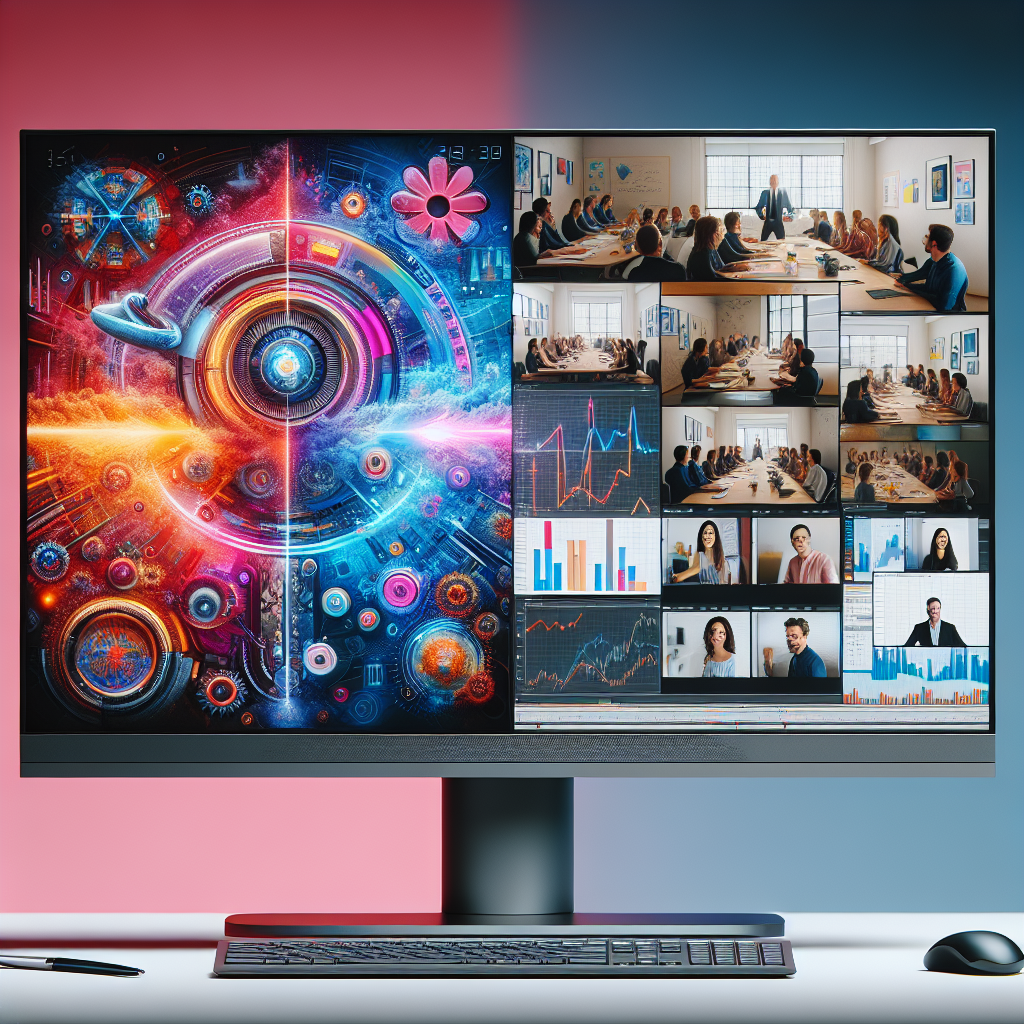Introduction to OLED Monitors
Organic Light Emitting Diode (OLED) monitors have increasingly become popular in the display technology market due to their superior color accuracy, deep blacks, and fast response times. They are highly sought after by professionals as well as gaming enthusiasts seeking the best visual experience. One feature that has gained attention recently is split-screen functionality, which allows users to efficiently multitask by displaying multiple inputs or applications simultaneously. This article explores whether OLED monitors are available with split-screen functionality and the benefits such technology offers.
Benefits of OLED Monitors
OLED technology provides several advantages over traditional LCD and LED displays:
- Superior Color Accuracy: OLED monitors deliver true-to-life colors, making them ideal for graphic designers and video editors.
- Deep Blacks: OLED pixels can turn off completely, providing infinite contrast ratios.
- Fast Response Times: The quick pixel response times minimize motion blur, ideal for gaming and video playback.
- Wide Viewing Angles: Colors and brightness remain consistent from different angles.
- Thinner and Lighter Design: OLED screens are generally slimmer and weigh less than their LCD counterparts.
What is Split-Screen Functionality?
Split-screen functionality, often referred to as Picture-by-Picture (PBP) or Picture-in-Picture (PIP), allows users to divide their monitor’s display into multiple sections, each showing a different input or application. This can be particularly useful for:
- Multitasking: Running multiple applications simultaneously without switching between them.
- Enhanced Productivity: Viewing multiple data sources at once, ideal for analysts and developers.
- Gaming: Playing a game while displaying a guide or walkthrough on the same screen.
Availability of OLED Monitors with Split-Screen Functionality
The availability of OLED monitors with split-screen functionality is rather limited compared to their LED or LCD counterparts. However, there are some high-end models that incorporate this feature, providing the best of both worlds—exceptional OLED display quality and advanced multitasking capabilities. Here are some notable examples:
| Brand | Model | Split-Screen Functionality | Screen Size |
|---|---|---|---|
| LG | 48CX | Yes (PBP Feature) | 48 inches |
| Dell | Alienware AW5520QF | Yes (PIP Feature) | 55 inches |
| Asus | ProArt PQ22UC | Yes (MultiView) | 21.6 inches |
How Split-Screen Enhances Productivity
1. Efficiency for Professionals
Graphic designers, video editors, and software developers often require multiple applications open simultaneously. Split-screen functionality in OLED monitors allows them to efficiently organize their workspace, enhancing productivity.
2. Ideal for Streamers and Gamers
Gamers and streamers benefit significantly from split-screen functionality. It allows them to play a game on one part of the screen while monitoring their streaming software or chat window on another.
3. Multi-Source Watching
With split-screen functionality, users can watch multiple video sources at the same time. For instance, they can keep an eye on a live sports event while simultaneously catching up on their favorite TV show.
Technical Considerations
When considering an OLED monitor with split-screen functionality, there are several technical aspects to take into account:
- Resolution: Ensure the monitor can support high resolutions on all split-screen sections for optimal clarity.
- Inputs: Multiple HDMI, DisplayPort, or USB-C inputs may be necessary depending on the devices connected.
- HDR Support: High Dynamic Range can enhance the quality of multiple displays with better brightness and color range.
- Software: Proprietary software from the monitor manufacturer often facilitates better split-screen management.
Potential Drawbacks
Despite their advantages, OLED monitors with split-screen functionality come with some potential drawbacks:
- Burn-in: Prolonged display of static images can cause burn-in, though many modern OLEDs have mitigation features.
- Cost: OLED monitors tend to be more expensive, and adding split-screen functionality can further elevate the price.
- Limited Options: There are fewer choices available compared to LCD counterparts.
Conclusion
While OLED monitors with split-screen functionality are not widespread, the available options offer impressive features for those needing superior display quality and multitasking capabilities. Technology is continually evolving, and we can expect more manufacturers to incorporate split-screen features into OLED monitors in the future. Whether for professional use, gaming, or general productivity, an OLED monitor with split-screen functionality can significantly enhance the user experience.

